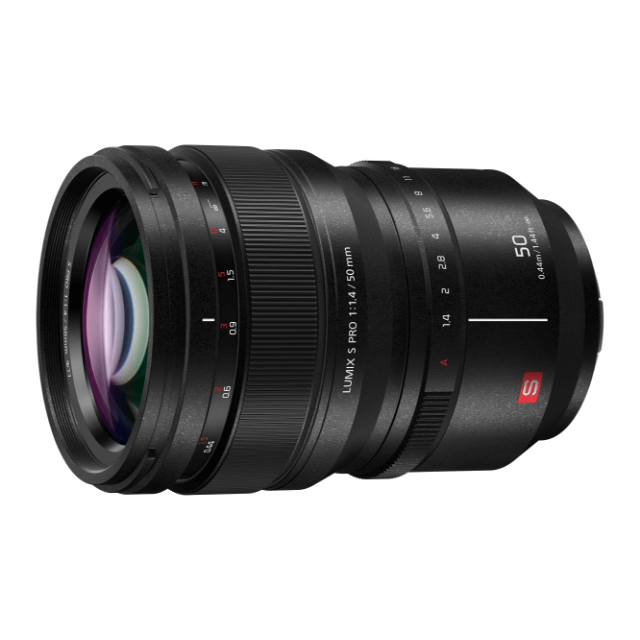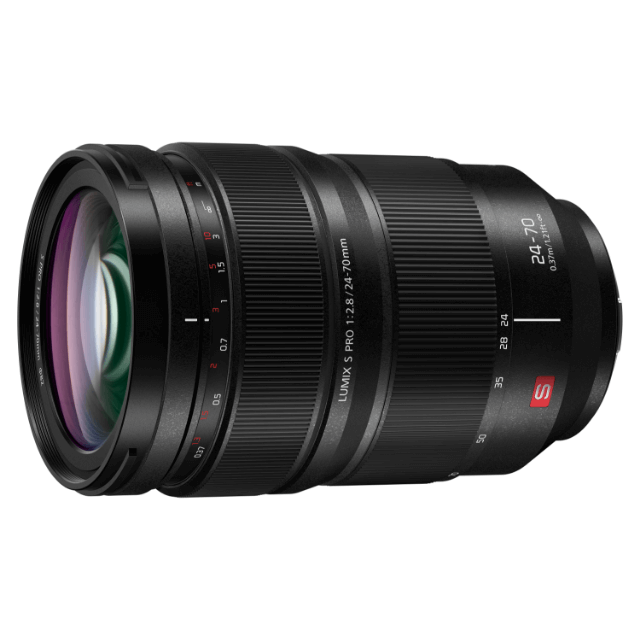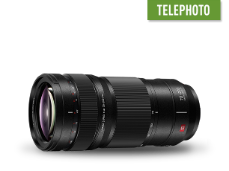
This is the Optical Design Department- Third Edition [LUMIX S PRO 70-200 mm F2.8 O.I.S.]
Hello, everyone.
"This is the Optical Design Department" is a series that takes an in-depth look at LUMIX lenses.
In "This is the Optical Design Department", we in the Optical Design Department will explain the lens designs and their features, as well as the dedication and philosophy behind our work that you will not find in our catalogues or websites.
For those who are considering purchasing a camera lens, we encourage you to learn more about the design philosophy behind LUMIX lenses, and for those who already own a LUMIX lens, we hope you enjoy learning about the unparalleled attention to detail and thought that goes into the superb image quality you enjoy in your photography.
This is an article that explains various lenses written by developers full of technical jargon. By reading this, you too will be peering into the depths of enthusiasm for lens collecting.
The third article is about LUMIX S PRO 70-200 mm F2.8 O.I.S., explained by Nishioka.
The large-aperture telephoto zoom lens LUMIX is aiming for
Among the flagship S PRO lenses that focus on image rendering performance in the LUMIX S series for full-frame mirrorless cameras, the LUMIX S PRO 70-200 mm F2.8 O.I.S. is the lens with the large-aperture telephoto zoom.
Designed to deliver uncompromising performance in terms of image rendition, bokeh and depth of field, the S PRO lenses are 'certified by LEICA', meaning that their high performance and quality meet the stringent standards of Leica Camera AG.
The latest optical design technology is used to thoroughly prevent lens breathing and other problems, and to support professional video shooting, with the aim of creating a lens that meets the specific needs of both still and video creators.
To address the issue of camera shake, which is a common problem in handheld photography, a dedicated image stabilisation lens group is incorporated into the lens barrel to enable the camera's in-body image stabilisation and the in-lens image stabilisation to work together in real time, making it possible for the first time for our company to offer a lens with high image stabilisation performance of 7 stops at the telephoto end.
It also supports 1.4x and 2x teleconverters. With a 2x teleconverter attached, you can shoot up to 400 mm in the super-telephoto range.
In this article, we will introduce the key points of the optical design technology used in the development of this large-aperture telephoto zoom lens.
Pursuit of image rendering performance
The diagram below shows the lens configuration of the S PRO 70-200mm F2.8.

The optical design features 22 elements in 17 groups, including an aspherical lens to minimise spherical aberration. Two UED lenses and three ED lenses are optimally positioned to thoroughly correct chromatic and other aberrations, resulting in a sharp, high-definition image in every corner of the frame across the entire shooting range.
To ensure that the distance between the tip of the lens and the subject does not change when zooming, an internal zoom method is used that does not change the length of the lens barrel when zooming. This means that the centre of gravity of the entire camera does not change much and you can shoot comfortably with stable framing.
In addition, the refractive power of each lens group that moves when zooming is arranged in a 7- group zoom configuration of positive-negative-positive-positive-negative-positive-negative from the front, and by highly correcting the aberrations of each lens group, high image rendering performance is achieved throughout the zoom range.
A double-focus system is used for focusing, with two lens groups at the rear of the lens, indicated by the red lines. Most large-aperture telephoto zoom lenses released by other companies at the time of development used a configuration in which the lens group at the front of the lens barrel was used for focusing. However, in this configuration, the outer diameter of the lens at the front of the lens barrel is larger than that of the lens at the rear of the lens barrel, and this led to the problem that the lens used for focusing is heavy. When the lens is heavy, it becomes difficult to increase the speed and precision of autofocus. For this reason, the optical design of the 70-200 F2.8 uses the two lens groups at the rear of the barrel for focusing, allowing the lenses to be smaller in diameter and lighter in weight.
In addition, the use of low-density glass material for the focusing lens has enabled us to achieve the lens weight we were aiming for during development.
The independent operation of the two focusing lens groups allows advanced control of spherical aberration and field curvature, resulting in high image rendering performance regardless of subject distance. Breathing (change in angle of view during focusing), essential for video performance, is also minimised by allowing the two lens groups to cancel each other out.

Natural and soft bokeh
Next, I would like to explain what we have done to improve bokeh quality. In general, increasing the number of aspherical lenses makes it easier to achieve compactness and high performance, but it also makes it easier to produce ring bokeh, a pattern that looks like a tree ring in a spherical blur, and leads to higher part costs.
When this 70-200 F2.8 lens was first developed, we considered using three aspherical lenses in its optical design. However, after examining the balance between lens barrel size, bokeh quality and part costs, we finally adopted a design with a single aspherical lens, which reduced the increase in part costs and improved ring bokeh.
In manufacturing the aspherical lens, a new processing method was introduced to achieve higher aspherical surface shape accuracy than before, making ring bokeh less noticeable. In addition, the optical design of the lens ensures that spherical aberration is properly controlled throughout the entire zoom range, resulting in a soft bokeh rendering with minimal double-line bokeh.
Aiming for a 7-stop image stabilization effect
There are two main types of optical image stabilisation: body image stabilisation (B.I.S.), which corrects camera shake by moving the image sensor inside the body, and optical image stabilisation (O.I.S.), which corrects camera shake by moving some of the lens groups inside the lens.
This telephoto zoom lens has a long focal length of 200 mm at the telephoto end, making it prone to camera shake that cannot be adequately compensated for by the body's internal image stabilisation alone. Therefore, the lens had to be fitted with a built-in image stabilisation lens group.
The three lens groups surrounded by red lines in the diagram below are the image stabilisation lens groups.

In an optical design using an image stabilisation lens, it is important to consider the weight of the image stabilisation lens group, the amount of movement and the resolution performance when using image stabilisation.
If the weight of the image stabilisation lens group is too heavy, the mechanism for moving the image stabilisation lens group becomes larger and high-precision control becomes difficult. Therefore, it is important to reduce the weight of the image stabilisation lens group.
When the lens was first developed, we aimed to reduce weight by using two lenses in the image stabilisation lens group, but this resulted in a large amount of astigmatism, which affected resolution performance. To solve the astigmatism problem, we re-examined the lens configuration in the image stabilisation lens group and changed from a two-lens configuration (negative-positive) to a three- lens configuration (negative-positive-positive).
The change from a two- to a three-lens configuration also increased the weight of the lens. Therefore, we changed the lens material to one in which the density of the negative lens element is approximately 30% lighter and the density of the positive lens element is approximately 10% lighter, and also changed the shape to minimise the volume of each lens element while maintaining the weight of the two-lens configuration.
We also used an ED lens for the second lens element in the image stabilisation lens group and an aspherical lens for the third lens element to achieve high-resolution performance with controlled astigmatism and lateral chromatic aberration even when image stabilisation is used.
And as mentioned at the beginning of this article, the camera's in-body image stabilisation and in- lens image stabilisation work together in real time to achieve high image stabilisation performance of 7 stops at the telephoto end for the first time in our company's full-size mirrorless camera.
Teleconverter support

The teleconverter is designed to protrude slightly from the mount surface. To support a teleconverter, it is therefore necessary to provide a space near the mount surface to accommodate the teleconverter protrusion, as shown in the red box in the diagram below.

In general, optical performance is degraded when a teleconverter is attached, but by properly controlling the angle of light emission from the end surface of the lens, we have minimised the degradation of optical performance when a teleconverter is attached.
When a teleconverter is attached, the magnification of the lens can be increased by 1.4x or 2x without changing the distance to the subject, allowing the photographer to enjoy close-up shots of the subject. Even with a teleconverter attached, the powerful image stabilisation system allows you to concentrate on shooting with confidence, so we hope you enjoy shooting with the teleconverter.

Image rendition when using the 2x teleconverter
Lastly

This article has provided an overview of the optical design of the LUMIX S-series large-aperture telephoto zoom lens S PRO 70-200 mm F2.8.
If you already have this lens, we hope you will enjoy its soft bokeh and natural, impressive, three- dimensional rendering.
This is a heavy, large-aperture telephoto zoom lens that you may need to be determined to carry around, but we hope you will use it in a wide range of situations, including for portrait, wildlife and sporting event photography.





